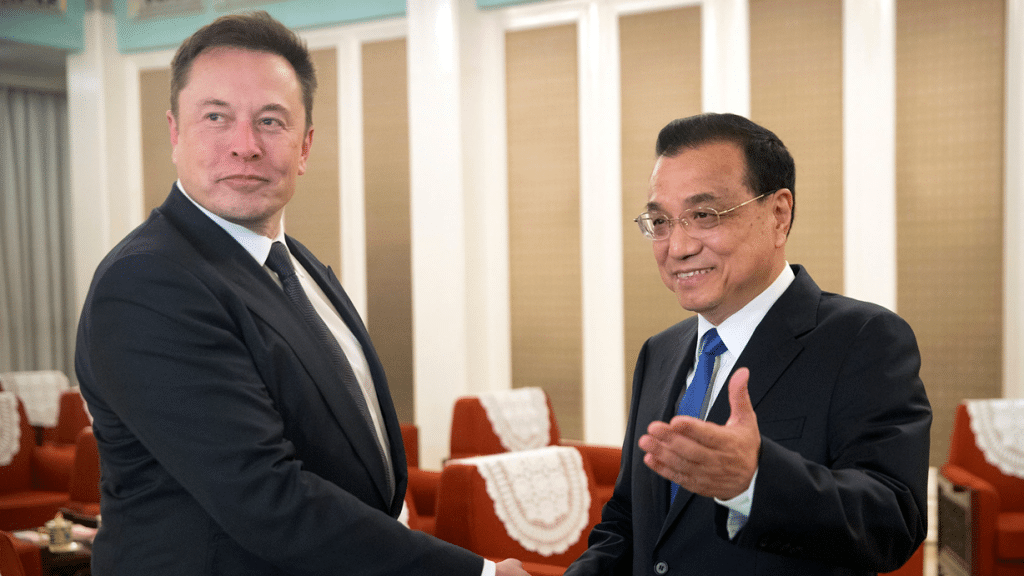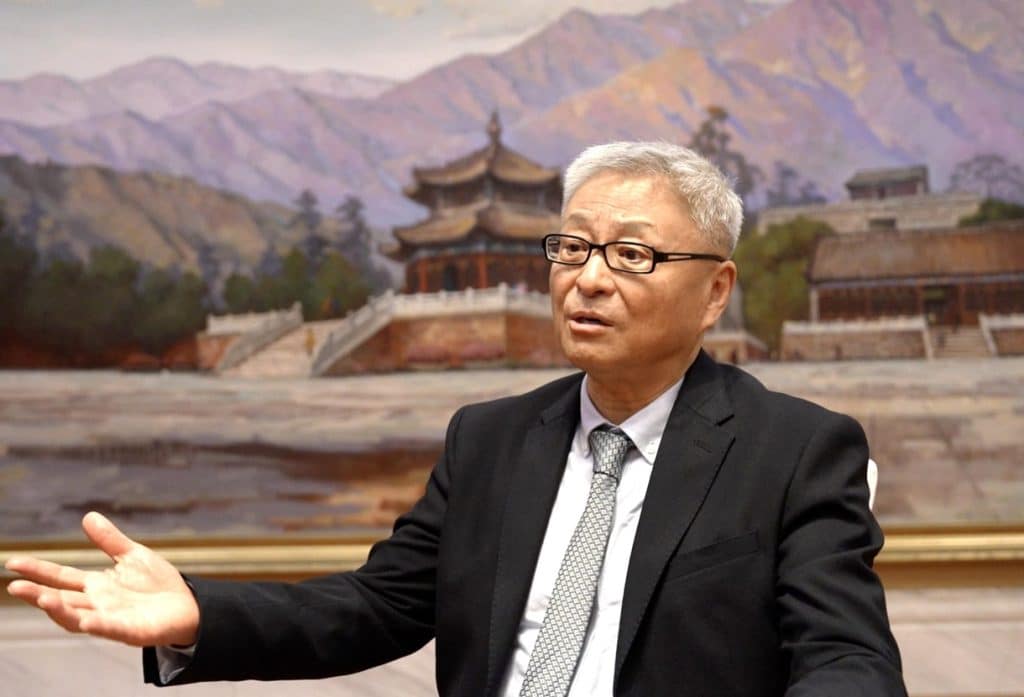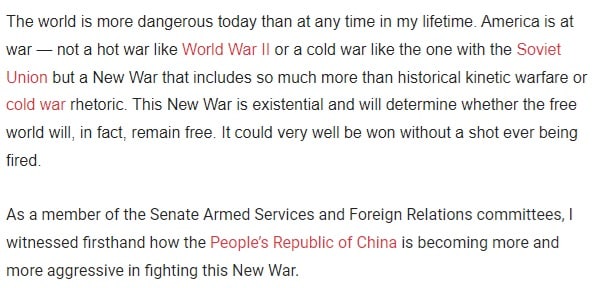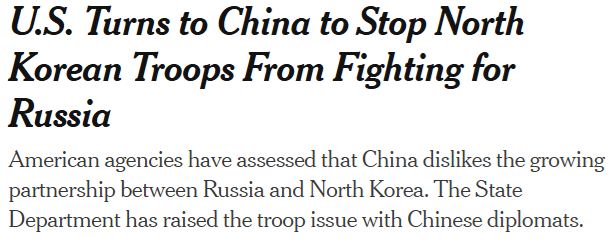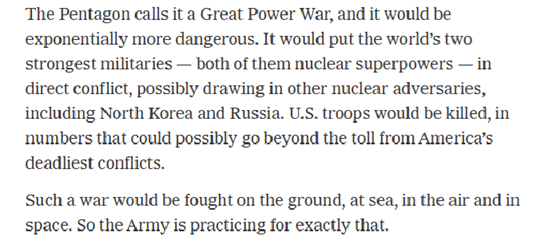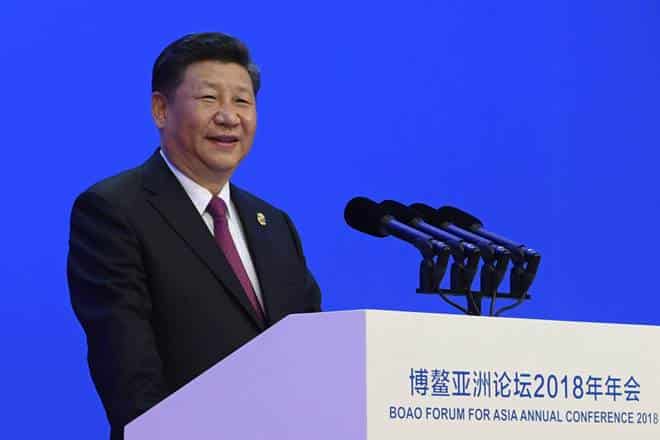Is there Room for US-China Cooperation on the Ebola Crisis? (Part II)
作者:Travis Miller 来源:US-China Perception Monitor
By TRAVIS M. MILLER October 14, 2014
In the first part of this series, the idea of a bilateral U.S.-China response to the Ebola Crisis in Africa was posed. It was noted that though the intentions of both the U.S. and China in providing aid to Africa may raise eyebrows on both sides of the Pacific, the national interests of both states in this circumstance have a remarkable and rare overlap. Questions of these motivations may fuel some domestic opposition. In response, it should be expressed to Chinese and U.S. citizens that at the end of the day, regardless of whether it be for humanitarian, economic, or soft power purposes, both the U.S. and China share a similar desire for the Ebola virus to be contained and eliminated.
A DIFFERENT TYPE OF CONTAINMENT
Once the intentions of the U.S. and China in Africa are set aside, the individual expertise of both states in combating the Ebola virus begin to rise into clarity. For China, a nation whose citizens compose nearly one-fifth the world’s total population, with an ever-increasing urban concentration, the spread of infectious disease has long been more than just a distant threat from an exotic land. Already in the twenty-first century has the state seen the outbreak of two infectious diseases, Severe Acute Respiratory Syndrome (S.A.R.S.) and H7N9 (avian influenza), that have threatened to impact massive population centers and spread beyond China’s borders. China’s approach to both outbreaks was markedly different. S.A.R.S. represented a turbulent trial that tested the inclinations of the Chinese government to censor information that may cause a stir amongst its citizens. Nearly a decade later, the outbreak of H7N9 demonstrated the successful application of the lessons learned from the mistakes made in combating S.A.R.S. and legitimized the Chinese government’s capability to coordinate a strong response in the public health sector.
Criticism concerning the withholding of information from the public and initial mismanagement of the S.A.R.S. outbreak by the Chinese government is not unfounded. However, the experience of handling a genuine public health issue provided the Chinese invaluable lessons that were quickly adapted in order to assure optimum containment of the epidemic. Massive quarantines within universities, villages, and other potential epicenters were mobilized soon after policy was enacted. Interdepartmental coordination was improved, as Vice Premier Wu Yi was placed in charge of S.A.R.S. Control and Prevention Headquarters, issuing sets of regulations and task forces from the provincial level to the country level. A fund totaling over US$1.1 billion was established by the central and local governments, and free healthcare treatment was provided for any patients suffering from S.A.R.S.
Though the Chinese government was initially slow to respond, bogged down by a transition in high-level leadership, the state was able to suppress the outbreak. The death total managed to stay in the hundreds worldwide. This is despite fears of a much larger pandemic deriving from initial reports of S.A.R.S. originating within Guangdong, a province of China with a population of around 105 million. Moreover, the Chinese were further successful in limiting the fatality rate to below seven percent; the majority of other states with a significant number of suspected S.A.R.S. patients typically saw a double-digit figure.
The lessons learned from the S.A.R.S. outbreak were successfully applied in combating H7N9, a strain of avian influenza not known to infect humans until reports of Chinese citizens suffering from the virus emerged in March 2013. As opposed to the S.A.R.S. outbreak, Chinese officials were noted for their transparency in reporting updates of cases concerning the H7N9 virus early on. Methods to contain the avian flu, including the closing of live poultry trading zones and the disposal of birds, products and transportation vehicles believed to have been exposed to the virus were deemed highly successful. The organizational coordination between state and local officials also marked a China with greater experience in containing virus spread, as the National Health Commission worked closely with local health officials across the country to file daily reports on any possible cases of the flu and develop plans for further prevention of exposure. The result was a limit to the virus’s exposure and subsequent death toll (unofficially at 120 as of April 2014). This is despite W.H.O.’s Assistant Director-General for Health Security, Dr. Keiji Fukuda, claiming in 2013 that H7N9 “is definitely one of the most lethal influenza viruses we have seen so far.” Furthermore, in October 2013 the Chinese government announced the completion of a vaccination for H7N9, though containment of the virus has led to a hold on administering it nationwide. The Chinese government’s handling of the H7N9 influenza has been internationally lauded as a successful venture in containing a virus and its ability to wreak havoc at a national and international level.
THE AMERICAN RESEARCH MACHINE
Prevention is a strong facet of the American health system, and despite the nearly seventy million foreign visitors that traveled to the country in 2013, the nation has remained relatively immune from many of the diseases that have afflicted other regions across the globe. Paradoxically, prevention can be a detrimental conquest when it comes to fighting an outbreak of a disease. For a state with the bulk of its medical staff trained in combating transmission through textbook methods and the C.D.C.-developed emergency plans, the amount of practical experience is limited to those who have traveled abroad to work in regions that have witnessed such unfortunate epidemics.
So what public health practices can the U.S. claim to have perfected? Unfortunately, the answer to that is very few. But there are areas of interest that the U.S. is remarkably proficient in. As aforementioned, one such strength of the U.S. is its ability to generate massive amounts of humanitarian aid funding. From the span of 2003-2012, the U.S. government donated one-third of all humanitarian assistance given worldwide. Though some European states are noted for giving a higher percentage in terms of GNI (gross national income), the figures by volume are not even close (European Union institutions gave a total of $17 billion over this time, compared to $38.9 billion by the U.S.). Regardless of how this money is allocated once in the field, the sheer magnitude of such contribution potential is impressive.
Not only has the U.S. government shown the ability to establish a wide funding base, but humanitarian assistance from the U.S. private sector also plays a significant role. According to the U.N. Office for the Coordination of Humanitarian Affairs Financial Tracking Service, since 2000 both the largest foundation donor (Bill and Melinda Gates Foundation) and largest private sector donor (Business Roundtable) have originated from the U.S. Several quality non-governmental organizations have also found their base out of the U.S. The Global Journal’s 2013 ranking of the “Top 100 NGO’s” worldwide (based on criteria of innovation, transparency, efficiency, impact, and other assorted standards) found an astoundingly disproportionate thirty-three ranked NGO’s emanating from within the U.S. These include prominent organizations such as Mercy Corps, Partners in Health, International Rescue Committee, the Clinton HIV/AIDS Initiative, International Medical Corps and several others in a multitude of fields. These kinds of enterprises often feature individuals with high rates of in-field experience, and many of the more noteworthy U.S. groups benefit from strong donor bases and relatively wealthy endowments. The NGO’s that mimic the U.S.’s success in the realm of donations must do so through their own groundwork and coordination for the solicitation of adequate financing, the unique skills and organizational commitment required to perform these tasks proving to be of the utmost value.
Another key facet to the U.S. humanitarian effort derives from the vast network of medical research institutions, scholarship and funding located within its borders. The New England Journal of Medicine stated that though declining, the U.S. share of global biomedical research and development expenditures was still set at 42.3% in 2012. Just as well, Forbes reported that of the approximately 3,000 biomedical academic research articles published in 2009, 40% emanated from the U.S. Large pharmaceutical companies from abroad are well-aware of the nation’s research strengths and have set up shop in the U.S. Novartis, a large Switzerland-based multinational pharmaceutical company, placed its research headquarters in Cambridge, Massachusetts near research powerhouses such as Harvard and M.I.T. This base of dynamic and influential research potential affords the U.S. an incomparable capacity to respond to global health crises like the Ebola virus with state-of-the-art biomedical solutions.
Despite this, it is almost certain that both states, along with the rest of the international community, will continue to race to develop their own pharmaceutical answer to Ebola while continuing to send unilateral humanitarian aid to Africa. Though this may wind up serving as a successful measure in assisting African nations stricken with Ebola, it would be wise to assess the respective expertise of the U.S. and China and ask ourselves, “To what extent could large-scale U.S.-China cooperation remedy what is quickly evolving into a global crisis?”
In tomorrow’s conclusion of this series, a policy proposal will be addressed to examine how the capacities of both states could shape what U.S.-China cooperation on Ebola would look like.
NOTE: The content of this work is the author’s opinion and does not reflect the position of the Carter Center.
REFERENCES
“Assessed Contributions Payable by Member States and Associate Members – 2012 2013.” (n.d.): n. pag. WHO. World Health Organization. Web. 08 Sept. 2014.
Brautigam, Deborah. The Dragon’s Gift: The Real Story of China in Africa. Oxford: Oxford UP, 2009. Print.
Caulderwood, Kathleen. “Ebola Outbreak 2014: China Adds To International Aid Efforts.” International Business Times. N.p., 03 Sept. 2014. Web. 04 Sept. 2014.
Chakma, Justin, Gordon H. Sun, Jeffrey D. Steinberg, Stephen M. Sammut, and Reshma Jagsi. “Asia’s Ascent — Global Trends in Biomedical R&D Expenditures.” NEJM.org. The New England Journal of Medicine, 02 Jan. 2014. Web. 09 Sept. 2014.
Chan, L. H., P. K. Lee, and G. Chan. “China Engages Global Health Governance: Processes and Dilemmas.” Global Public Health 4.1 (2009): 1-30. Web.
“China Helps Africa Fight against Ebola Epidemic – CCTV News – CCTV.com English.” China Helps Africa Fight against Ebola Epidemic – CCTV News. China Central Television, 13 Aug. 2014. Web. 08 Sept. 2014.
“Chinese Researchers Develop H7N9 Flu Vaccine.” CCTV News. China Central Television, 26 Oct. 2013. Web. 04 Sept. 2014.
“Fast Facts: United States Travel and Tourism Industry – 2013.” National Travel and Tourism Office (2014): n. pag.Travel.trade.gov. National Travel and Tourism Office, May 2014. Web. 08 Sept. 2014.
“Fever Rising.” The Economist. The Economist Newspaper, 16 Aug. 2014. Web. 09 Sept. 2014.
Finley, JC. “WHO: Ebola Outbreak Can Be Stopped in 6-9 Months.” UPI. N.p., 03 Sept. 2014. Web. 09 Sept. 2014.
FlorCruz, Michelle. “China’s Response To H7N9 Bird Flu Is Rapid, Unlike Previous SARS Epidemic.” International Business Times. N.p., 05 Apr. 2013. Web. 08 Sept. 2014.
Global Humanitarian Assistance Report 2013. Rep. Global Humanitarian Assistance, n.d. Web. 04 Sept. 2014.
Knobler, Stacey. Learning from SARS: Preparing for the next Disease Outbreak: Workshop Summary. Washington, DC: National Academies, 2004. Print.
Lianxing, Li. “Outbreak Making Chinese Investors Skittish.” Asia News Network. N.p., 21 Aug. 2014. Web. 08 Sept. 2014.
Osborne, Hannah. “H7N9 Bird Flu ‘One of Most Lethal Influenza Viruses’ and Greater Risk than H5N1 [VIDEO].” International Business Times RSS. N.p., 24 Apr. 2013. Web. 04 Sept. 2014.
Silver, Nate. “Role Models.” The Signal and the Noise: Why so Many Predictions Fail–but Some Don’t. New York: Penguin, 2012. N. pag. Print.
“Summary of Probable SARS Cases with Onset of Illness from 1 November 2002 to 31 July 2003.” WHO. World Health Organization, n.d. Web. 08 Sept. 2014.
Sun, Lena H., and Juliet Eilperin. “Obama: U.S. Military to Provide Equipment, Resources to Battle Ebola Epidemic in Africa.”Washington Post. The Washington Post, 07 Sept. 2014. Web. 09 Sept. 2014.
Tiezzi, Shannon. “Armed With SARS Lessons, China Fights H7N9 Bird Flu.” The Diplomat. N.p., 07 Dec. 2013. Web. 09 Sept. 2014.
“The Top 100 NGOs 2013.” The Global Journal 15 (2013): n. pag. Print.
来源时间:2018/4/5 发布时间:2014/10/14
旧文章ID:15798


